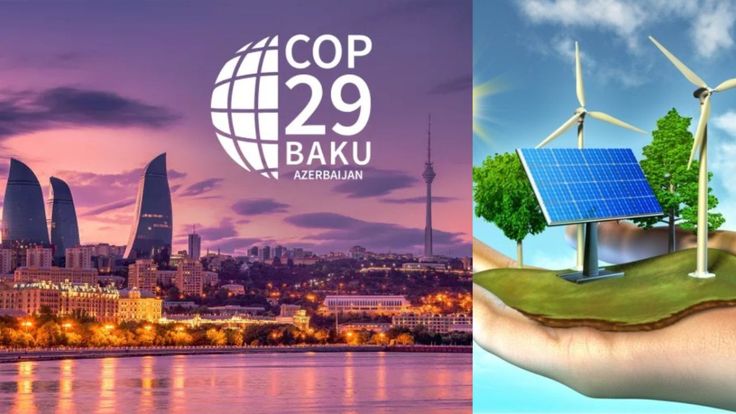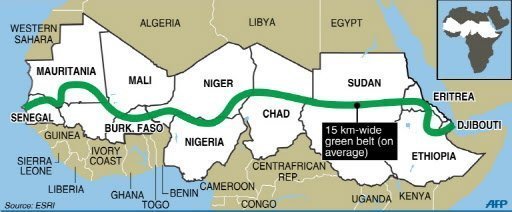Rising Conflicts: A Crucial Imperative at COP29

The United Nations Framework Convention on Climate Change (UNFCCC), adopted at the 1992 Earth Summit in Rio de Janeiro, aims to stabilise greenhouse gas levels to avoid harmful climate impacts. It provides a framework for negotiating binding agreements like the Kyoto Protocol and Paris Agreement. The Conference of Parties (COP), its decision-making body, like a pilgrimage, meets annually to assess progress and advance climate action.
As the 29th COP or COP29 approaches in Baku, Azerbaijan, in the second week of November, the global community stands at a critical juncture where political instability, conflict, and climate change intersect. In recent years, military coups and conflicts across Africa and the Middle East have created enormous challenges, derailing national governance and stalling international climate action. These crises cannot be overlooked as we prepare for COP29. The international community must take decisive steps to address the interconnected impacts of conflict, migration, and climate vulnerability on global climate efforts.
Military Coups and Political Instability: A Barrier to Climate Progress
Myanmar offers a stark example of the devastating intersection of coups and climate change. Since the military took power in 2021, extractive industries and war economies have intensified, leading to large-scale environmental destruction. The damage to forests, rivers, and agricultural land has exacerbated food insecurity, displacement, and violence in rural communities.
In addition, the military’s brutal crackdown on civil society and environmental activists has stifled progress in raising climate awareness and implementing equitable climate solutions. The oppressive regime has crippled civil societies, which plays a crucial role in advocating for sustainable practices and holding governments accountable. This suppression of dissent not only hinders local environmental efforts but also weakens Myanmar’s ability to contribute to international climate action. Furthermore, social unrest can limit public participation in climate action and diminish the capacity for grassroots movements to advocate for sustainable practices. Thus, a stable political environment is crucial for effective climate action and long-term sustainability.
The resurgence of military coups across Africa spanning from Guinea, Mali to Burkina Faso, Sudan and Niger has thrown entire regions into turmoil, stalling economic activities, development initiatives, and, crucially, climate action. Coups often lead to sanctions, aid cuts, and political isolation, which can severely hamper efforts to address climate challenges.
Research shows that climate change acts as a threat multiplier, intensifying existing political, social, and economic vulnerabilities in already fragile states. In regions like the Sahel, extreme droughts and desertification are straining natural resources, leading to greater competition for water and land, which, in turn, fuels social unrest. This instability makes military takeovers more likely, creating a vicious cycle of violence, poverty, and environmental degradation.
At COP29, world leaders must address the urgent need for climate resilience in politically unstable regions. Military coups not only undermine local governance but also disrupt international and regional cooperation on climate policies. Without stable political systems in place, these countries will struggle to access the financing and support needed to adapt to climate change.
The international community should work to find mechanisms for delivering climate finance directly to local communities and civil society organisations, bypassing central governments in conflict-ridden regions where possible. Ensuring that climate funding reaches the most vulnerable is critical for breaking the cycle of instability and environmental collapse.
Middle Eastern Conflicts: Water Stress, Migration, and Vulnerability
The Middle East is another region where political conflict intersects with climate vulnerability, exacerbating both crises. Ongoing conflicts in Lebanon, Palestine, and the broader region have caused massive displacement, economic hardship, and environmental degradation, all of which are worsened by the effects of climate change.
In Lebanon, years of political dysfunction, compounded by an economic collapse, have hindered efforts to address growing water stress and environmental degradation. Water scarcity threatens agricultural productivity, and as climate impacts worsen, Lebanon risks further food insecurity and internal migration. Similarly, the Israeli-Palestinian conflict has crippled efforts to manage shared water resources. In Gaza, more than 97% of water is undrinkable due to contamination, and decades of conflict have damaged critical infrastructure, making it difficult to adapt to climate-related disasters.
At COP29, nations must prioritise addressing the environmental fallout of Middle Eastern conflicts, including how war accelerates water stress and climate-induced migration. With millions displaced across the region, countries like Jordan and Lebanon are shouldering immense pressures, facing their own resource shortages while hosting refugees. Climate adaptation strategies must be integrated with humanitarian relief and reconstruction efforts in conflict zones to address this complex crisis.
Climate-Driven Migration and Displacement
As conflicts intensify in Africa and the Middle East, the effects of climate change are driving mass migration and displacement. Thousands are being forced from their homes in search of more livable conditions in regions like the Sahel, where droughts and desertification are worsening. Similarly, conflicts in Syria and Palestine have displaced millions, contributing to one of the largest migration crises in recent history.
Displacement often exacerbates the vulnerabilities of migrants and host communities alike. For instance, Lebanon is struggling to support 1.5 million Syrian refugees while facing its own severe water shortages and economic crises. In Africa, where countries like Sudan are already grappling with conflict and climate change, millions of people are at risk of further displacement as floods and droughts intensify.
COP29 must urgently address the connections between climate change, conflict, and migration. While existing climate finance mechanisms focus largely on mitigation and adaptation, there is a growing need to ensure that support also extends to managing climate-induced displacement. This could involve developing climate-resilient infrastructures in refugee-hosting areas and implementing policies that protect the rights and livelihoods of displaced populations.
Loss and Damage: A Key Priority for Vulnerable Nations
One of the central issues at COP29 must be Loss and Damage, the concept of addressing irreversible climate impacts that go beyond adaptation. For regions impacted by both conflict and climate change, Loss and Damage financing is critical to rebuild destroyed infrastructure, restore ecosystems, and provide support to communities displaced by disasters.
At COP28, the creation of the Loss and Damage fund was hailed as a major victory for climate-vulnerable nations. However, the fund remains underfunded, and there are significant questions about how it will be distributed especially to regions plagued by political instability. Data from the Global Climate Risk Index highlights that many of the countries most affected by climate-related disasters are also conflict zones. Sudan, for instance, ranks among the top 20 most climate-vulnerable countries, facing extreme flooding while also navigating political instability.
The international community must come to COP29 prepared to scale up Loss and Damage financing and ensure it reaches conflict-affected regions. Countries like Sudan, Somalia, and Yemen, where both conflict and climate disasters have converged, should be prioritised for assistance. For these regions, addressing Loss and Damage is not just about recovering from environmental disasters, it’s about securing the very foundation of survival for millions of people.
Regional Cooperation and the Role of International Actors
Regional organisations such as ECOWAS, the African Union (AU), and the Arab League are crucial players in the fight against climate change, especially in politically unstable regions. However, the rise of military coups and armed conflicts threatens to disrupt the continuity and progress of these regional initiatives.
Clearly, these political turmoils often lead to weakened regulatory frameworks and enforcement, making it difficult to implement and uphold environmental policies and in regions where military regimes prioritise short-term economic gain, exploitation of natural resources increases, exacerbating climate change impacts. Coups in West Africa, for example, have delayed regional climate strategies, leaving populations more vulnerable to the impacts of droughts and floods.
International cooperation at COP29 must prioritise strengthening the capacity of these regional organisations to act as stabilising forces for climate action. Additionally, global powers, including the EU and the U.S., need to align their foreign policies with climate goals, ensuring that sanctions or political measures in response to coups do not inadvertently undermine climate adaptation efforts in those regions.
Conclusion: A Call to Action at COP29
As the world heads to COP29 in Baku, it’s clear that the climate crisis cannot be addressed in isolation from the political and social contexts in which it unfolds. The rise of military coups, armed conflicts, and large-scale displacement are adding new layers of complexity to global climate efforts, creating significant barriers that must be addressed through innovative approaches to governance, finance, and international cooperation.
At COP29, leaders must acknowledge the urgency of these interconnected crises and prioritise solutions that protect the most vulnerable. Loss and Damage financing must be scaled up, with mechanisms in place to deliver support even in politically unstable regions. Additionally, new strategies must be developed to manage climate-induced displacement and water stress in conflict zones. The international community cannot afford to sideline these issues any longer, addressing them is critical for ensuring a resilient, sustainable future for all.
By confronting these challenges head-on at COP29, the global community has an opportunity to create a roadmap for building climate resilience even in the most fragile states. The stakes are too high to ignore the connections between political instability and climate action, the future of millions depends on the actions taken now.
Written by Muhammad Sheriffdeen, Suleiman Hawwa

